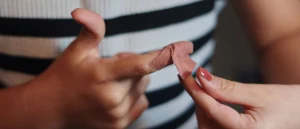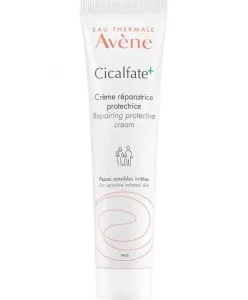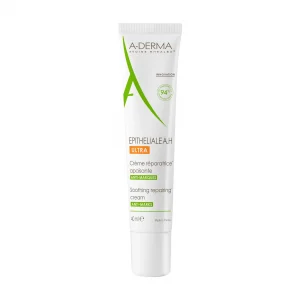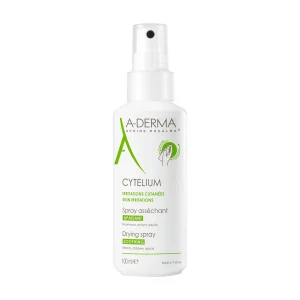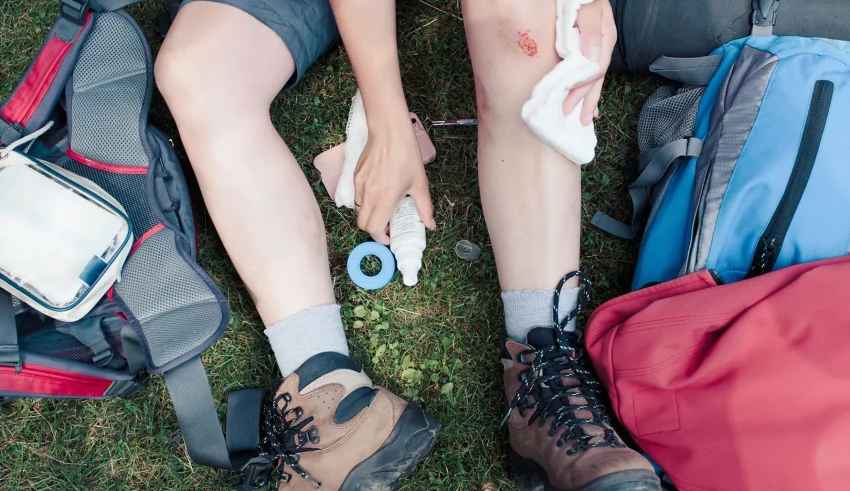
Whether it’s a small cut or a more severe injury, everyone has experienced a wound at some point in their life. Every time our skin breaks, our bodies go through a healing process to repair the damage, but how does this happen? That’s why we reached out to the dermatologist Dr. Rania Mohb to walk us through the stages of wound healing and reveal the proper way to disinfect a wound.
What are the stages of wound healing?
The body goes through a series of overlapping phases to achieve wound healing. According to Dr. Rania Mohb, these phases are hemostasis, inflammation, proliferation, and maturation.
Phase 1: Hemostasis phase
This occurs within seconds to minutes of injury. During this phase, the body activates its emergency repair system to form a barrier to block drainage and prevent too much blood loss. Clotting also helps to close and heal the wound, forming a scab.
Phase 2: Defensive/Inflammatory phase
Once the wound is no longer bleeding, the body can begin to clean and heal it. First, the blood vessels around the wound open up a bit to allow more blood flow. Fresh blood brings more oxygen and nutrients to the wound. White blood cells help clean the wound by fighting any infection. They also send out chemical messengers that help repair the area.
Phase 3: Proliferation phase
Once the wound is clean and stable, your body can begin to rebuild the site. Oxygen-rich red blood cells arrive at the site to create new tissue. Chemical signals in the body tell the cells around the wound to make elastic tissue called collagen. This helps repair the skin and wound tissue. At this stage of healing, you may see a fresh, red, raised scar.
Phase 4: Maturation phase
Even though your wound appears closed and repaired, it is still healing – this is called the maturation phase. During this phase, the new tissue slowly gains strength and flexibility. You may also experience some itching or tightness in the area at this time. This phase can last from a few weeks to several months.
What factors affect the stages of wound healing?
Many factors can impact the stages of wound healing. Primary factors that impede the healing process include poor perfusion, uncontrolled comorbid disease, malnutrition, or smoking. Local factors that can interfere with healing include pressure, excessive swelling, maceration, and dehydration. Effective wound management involves treating any underlying disease or factors that may interfere with healing.
So how long do wounds take to heal? Dr. Rania Mohb explains that the time it takes for a wound to heal depends on several different factors. No two people heal the same way, so no timetable determines how long it will take for you to get back to normal.
How do you know if a wound is healing or infected?
Sometimes the healing process does not go smoothly. Germs and bacteria can find their way in and cause an infection. Remember that all types of wounds can become chronic wounds over time. Make sure to keep an eye on your wound throughout the healing process. Below we look at the different signs you need to monitor.
Signs of infection
Dr. Rania Mohb indicates that there are certain symptoms to keep an eye out for if you think your wound is infected: warmth, redness, discharge, pain, and fever.
- Warmth
Often, early in the healing process, your wound will feel warm. This is because white blood cells are fighting germs or bacteria. But if the wound is warm after the first five days, it may mean that your body is fighting to keep bacteria and infection away.
- Redness
The area may be swollen, painful, and red right after the injury. This is normal, as blood is sent to the area to provide oxygen and other nutrients needed for healing. But if the wound is still red and swollen after five days, it’s a sign that your body isn’t healing properly.
- Discharge
After the initial discharge of some pus and blood, your wound should be clear. If the discharge continues during the healing process, it’s probably a sign of infection. You’re probably asking, “do wounds smell when healing?”, Dr. Rania Mohb affirms that wound odor is usually the result of necrotic tissue or bacterial colonization in the wound bed.
- Pain
Pain is normal after a wound. If your wound is deep, the pain will certainly be greater. But if you experience persistent pain, it’s also a sign of infection.
- Fever
Once an infection has occurred, it enters your bloodstream and spreads throughout your body, causing fever and general discomfort.
If you experience any of these symptoms, you should seek medical attention.
Signs of healing
Below are some common healing factors that indicate that your wound is healing well:
- Scabs
If you find that your wound is still bleeding after a long time and no scabs are forming, you may need to see a doctor.
- Swelling
Swelling is a sign that your immune system is repairing your wound. The blood vessels expand to help blood flow and send oxygen, vitamins, and minerals to your wound. This stage should not last more than five days.
- Tissue growth
Once the swelling has gone down, you will notice new tissue forming over the wound – this usually lasts a few weeks.
- Scar
This is proof that healing has occurred. The initial scab comes off and you are left with a scar. It may stay with you for many years if your wound was severe or it may slowly fade.
How to disinfect a wound?
No matter how deep the wound is, disinfecting it properly will reduce the risk of developing an infection.
1- Wash your hands.
Soap and water are all you need. Make a good lather. Then dry your hands thoroughly with a clean towel. If you don’t have access to running water, you can also use an alcohol-based hand sanitizer. It is best to wash your hands with water, but using a hand sanitizer can be an option.
2- Stop the bleeding, if necessary.
If the wound has not stopped bleeding on its own, place a clean or sterile bandage or gauze over it and apply direct pressure. Do not remove the gauze or bandage until you are sure the bleeding has stopped.
3- Clean the wound and surrounding area.
Rinse the wound with clean water. Use a soapy washcloth to clean around the wound. Remove any dirt particles from the area and let the tap water run over the cut for several minutes. A dirty cut or scrape that is not properly cleaned can lead to infection and scarring.
After cleaning the wound, apply Eau Thermale Avène Spring Water Spray to remove residual impurities and reduce redness and irritation. Rich in silica, Eau Thermale Avène Spring Water Spray brings softness and comfort for an instant feeling of well-being with each application!
4- Apply a wound cream.
To repair, purify and soothe irritated skin more quickly, we recommend applying the following creams that accelerate healing and skin regeneration. They form a moisturizing and protective film on the sensitive areas and create a “bandage” effect that protects the skin from external aggressions.
For non-oozing wounds:
Eau Thermale Avène Cicalfate+ Skin Repair Cream
A-Derma Epitheliale A.H Ultra Soothing Repairing Cream
For oozing wounds:
If your wound is oozing, we recommend drying it with the following spray from A-Derma. It drains and decongests oozing skin. It also soothes, calms, and softens the skin in case of irritation.
A-Derma Cytelium Drying Spray
Once your wound is dry, you can follow up with the creams mentioned above.
5- Dress the wound with a bandage.
According to Dr. Rania Mohb, on the first two days of the wound, when it is still open and bleeding, it is best to cover it with a fresh, clean bandage. Leaving a very fresh wound uncovered can dry out new surface cells, which can increase pain or slow the healing process. It can also increase the risk of infection, as bacteria can enter a wound that has not yet begun to heal.
6- Seek medical help, if necessary.
Visit your doctor or the emergency room if you have a deep cut or puncture wound.
Last Updated on February 16, 2024
